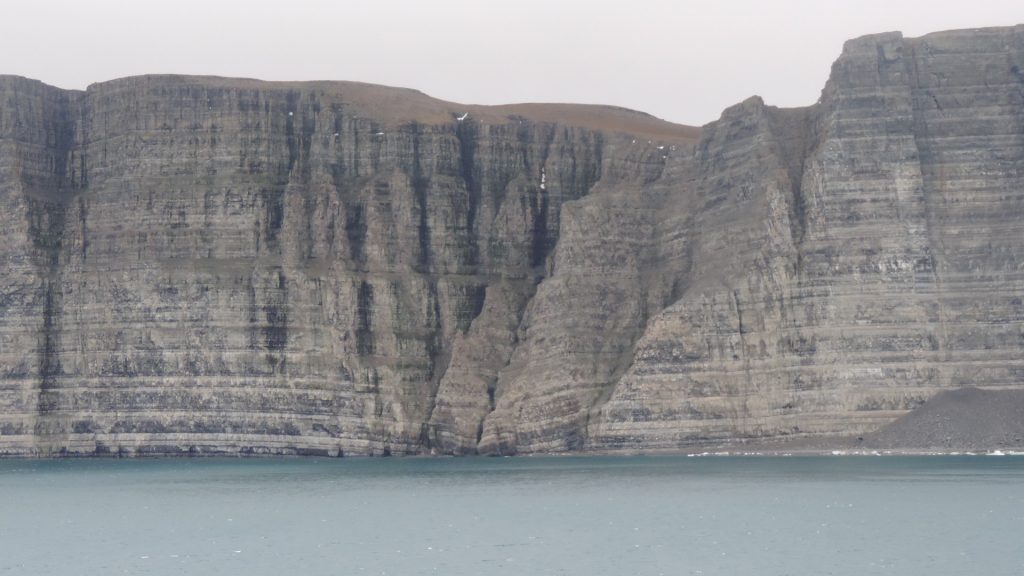What a half-century of studying Arctic seabirds has taught scientists about contaminants in the region
Canada's longest-running environmental monitoring program has collected eggs from Prince Leopold Island since 1975.

Clues to the changing Arctic environment are perched on the sheared-off cliffs of Prince Leopold Island.
Everything from contaminants such as DDT to changes in wind and precipitation are being tracked here by federal scientists.
In particular, researchers are interested in how these impacts are reflected in the eggs of Arctic seabirds like thick-billed murres and northern fulmars.
“Due to the types of food they eat, where they stand in the food chain and some of their behaviour, the contaminant signatures we can screen in these birds can tell us a lot about the health of the environment they live in,” said Philippe Thomas, a wildlife biologist with Environment and Climate Change Canada.
The Arctic Seabird Egg Monitoring Program is Canada’s longest running environmental monitoring program. Since 1975, eggs have been collected from Prince Leopold Island, a flat-topped uninhabited island of about 64 square kilometers (about 25 square miles) in Nunavut’s Peel Sound.
The study of contaminants here has minimal impact on the bird population. They nest in the tens of thousands, and when scientists visit, they collect only 15 eggs.
From this, scientist have seen, for example, declines in the concentration of most pollutants in seabird eggs since the 1970s and 1980s. In particular, they’ve seen reductions in mercury, pesticides and flame retardants, which have all faced national and international bans over the past decades.
The pesticide DDT, for example, was found to thin bird eggs so they’d crack and lead to reproductive failure. It was banned worldwide in 2001 under the Stockholm Convention, but for decades prior was gradually phased out by different countries.
“Seeing those programs that really banned DDT chemicals in the environment, and seeing how birds almost immediately responded with lower levels of DDT, it’s always satisfying because it gives you justification or information on whether or not the investment was worth it,” said Thomas.
Programs to put these bans in place and find alternatives are costly, Thomas said, so you want to make sure they’ve worked.
“Looking at indicator species in the environment really helps us in answering those questions on whether or not our programs and mitigation strategies were really effective in bringing about change,” said Thomas.
But there are many factors at play when they study existing contaminants and model what changes could take place in the future.
Mercury, for example, has been in decline among seabird eggs overall, but the influence of climate change is shifting how this looks in models.
“Some of our newer studies are showing the potential for an increase in mercury concentration in murre eggs from Prince Leopold,” said Thomas.
This often linked with changes in the North Atlantic Oscillation, which affects the strength and direction of westerly winds, as well as heavier snowfall and changes in sea ice.
“The state of the environment — so those changes in wind and sea ice — is driving the movement of prey and the food items the seabirds are consuming and in turn changing their exposure to contaminants,” said Thomas.
“We really do see the influence of climate change and the changing environment on some of those key indicators we screen for in those contaminant signatures.”
Most of these contaminants aren’t local to the Arctic environment, he said. Rather, they’re brought in from down south or overseas.
“Wind patterns are transporting, now, moister air over the Arctic. As the moisture condenses and aggregates into snow, it gets deposited into the Arctic environment and brings with it a lot of its pollutants,” Thomas said.
Understanding how this could affect the environment and wildlife is important, in particular, for the people who depend on it for food.
This is a big part of the consideration of what makes for a good indicator species.
In order for a species to be a good indicator of change, it has to strike the balance between being sensitive enough that there is a notable impact, but not so sensitive that the species is unstable and at risk of dying off.
“That’s kind of the Western science perspective but we have to remember too that an indicator species is really selected in consultation with northern communities,” said Thomas.
“They’re a good sentinel species to the environment and at the same time really important for the communities involved.”